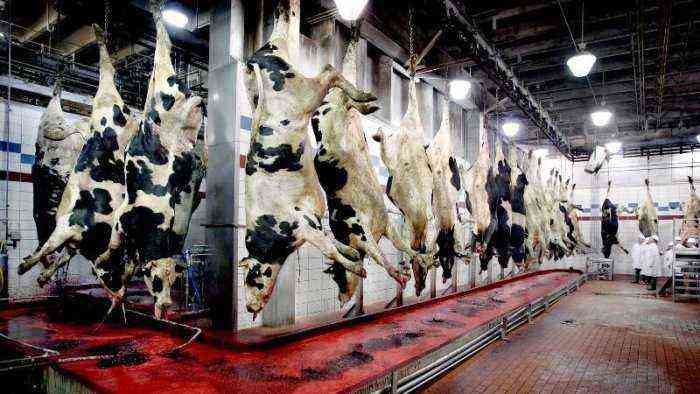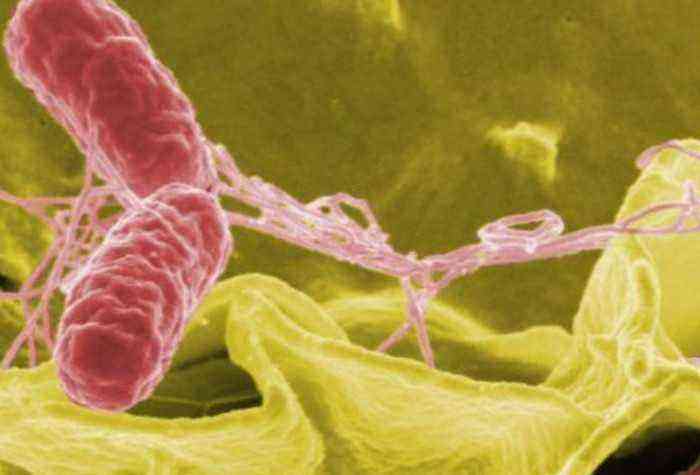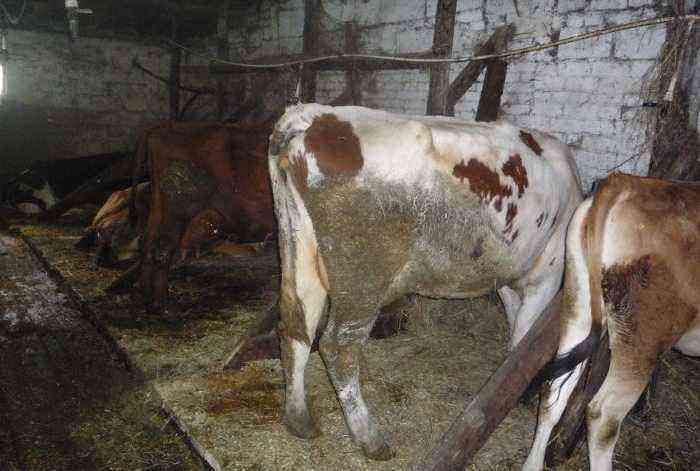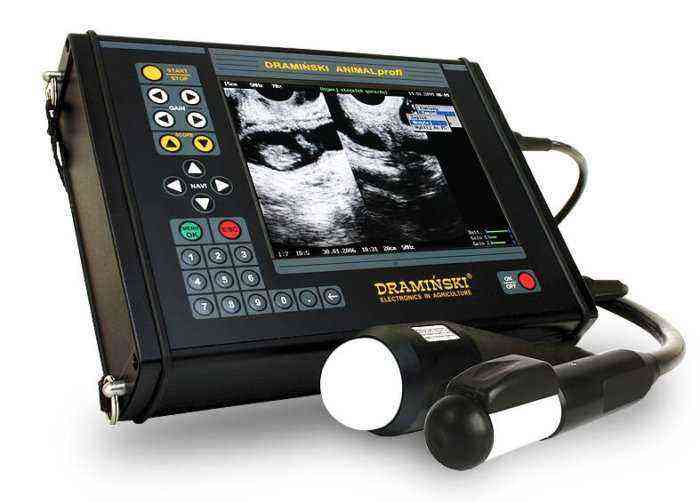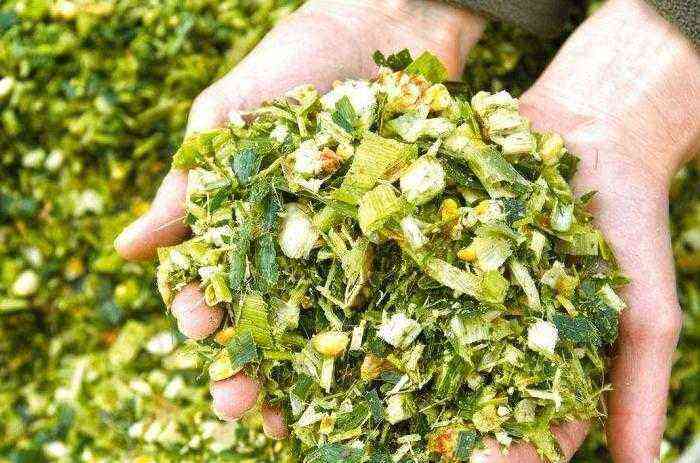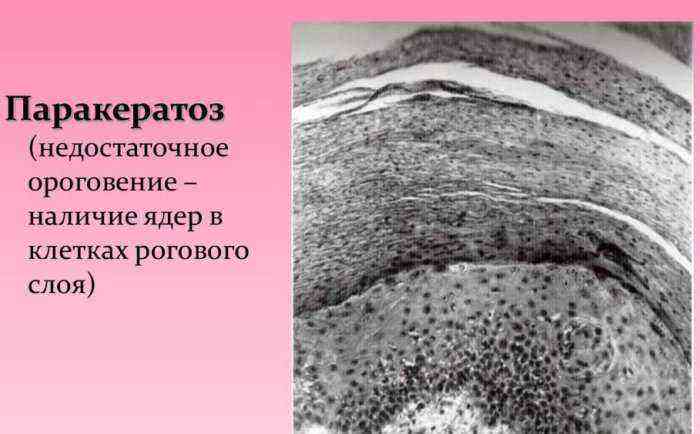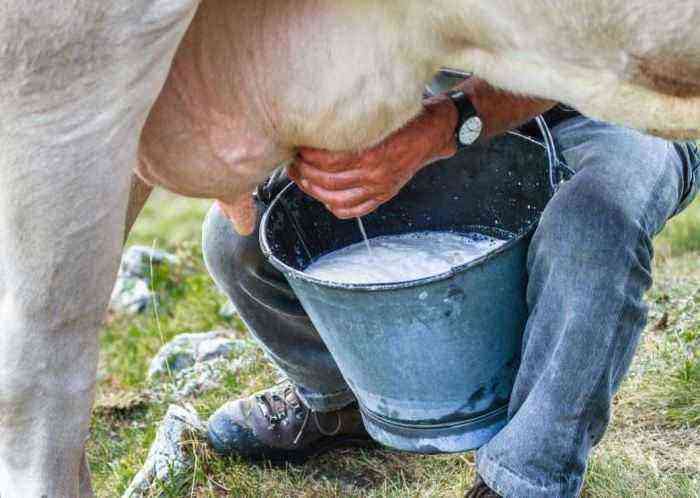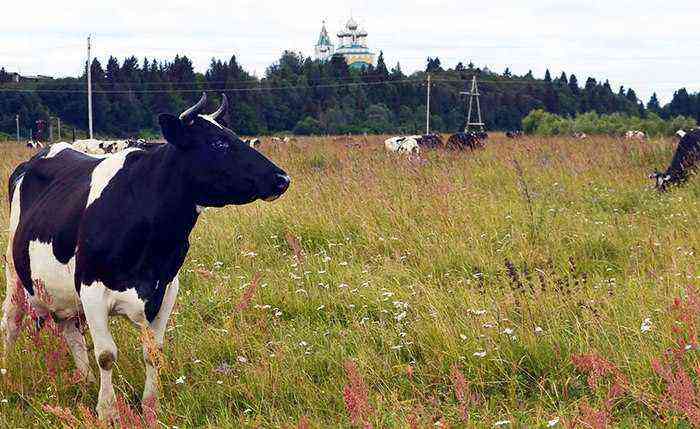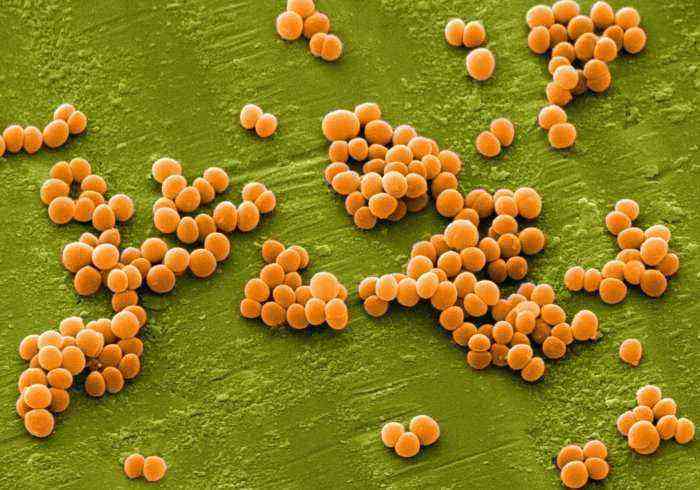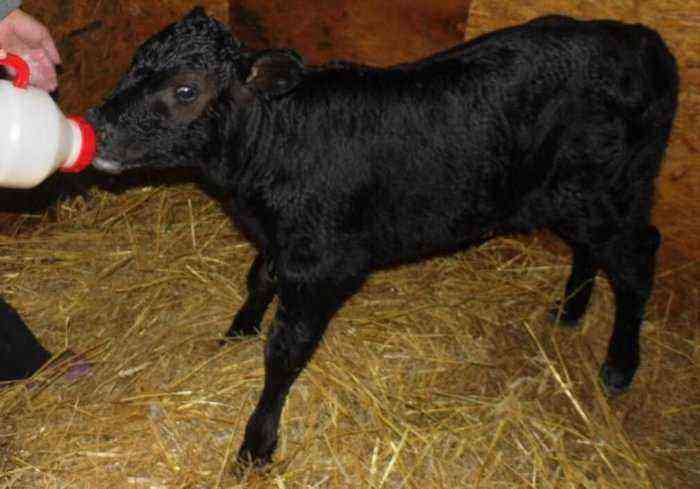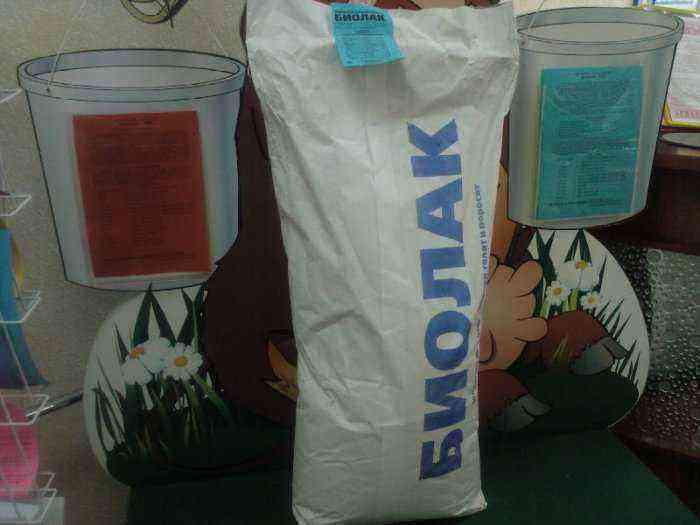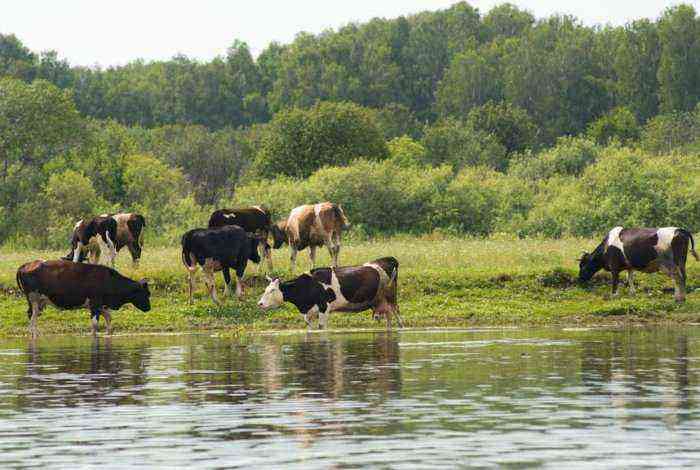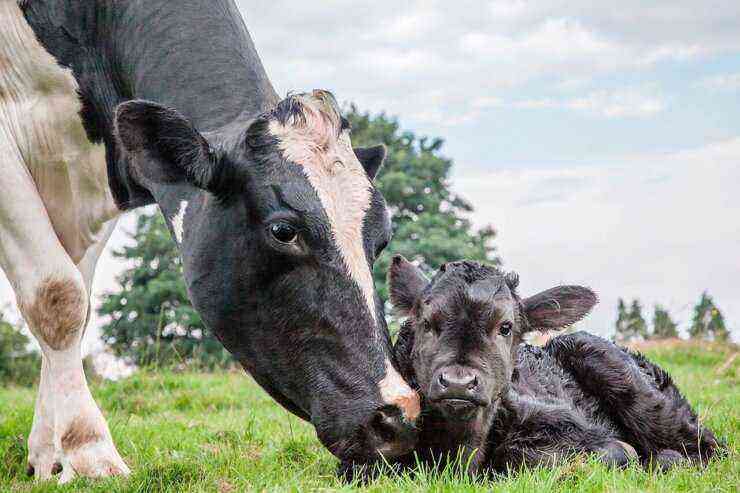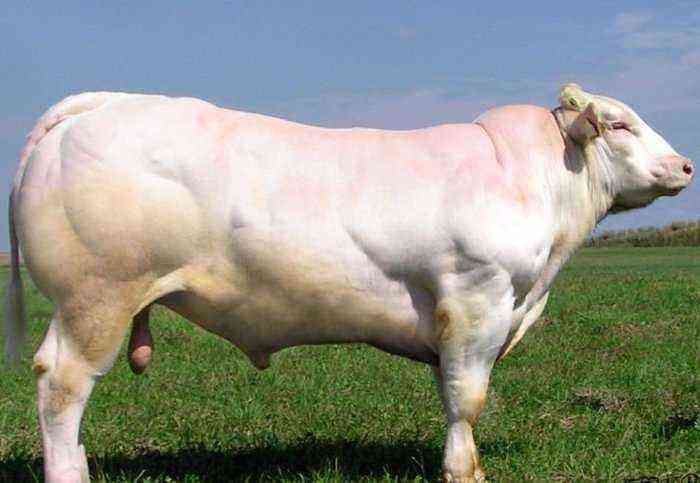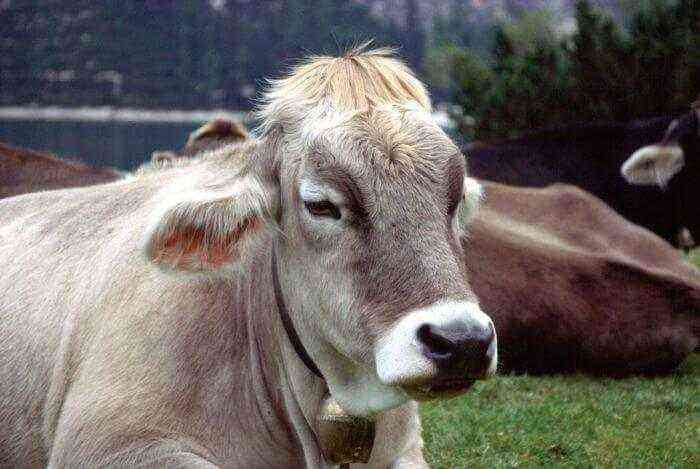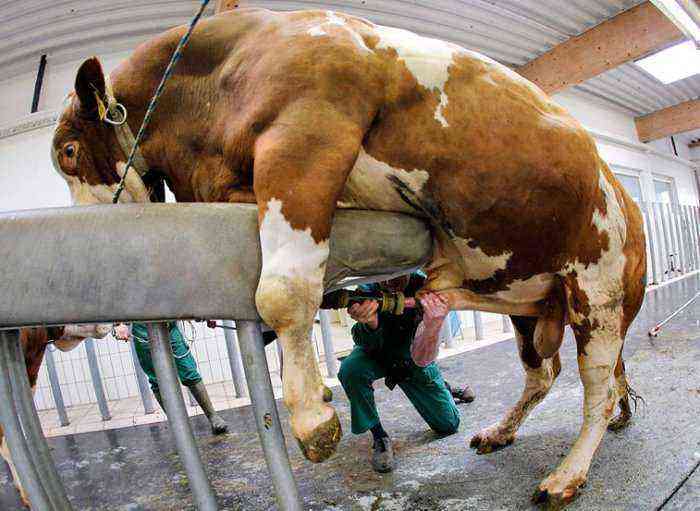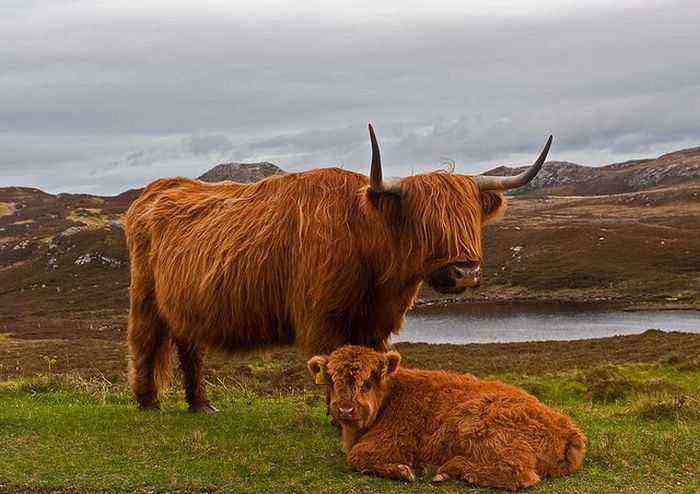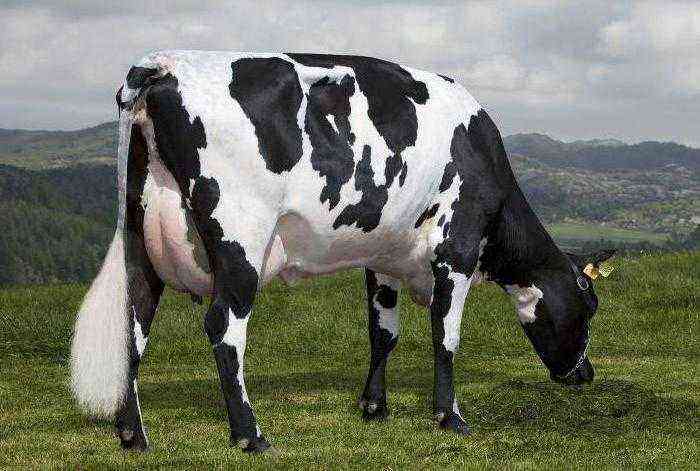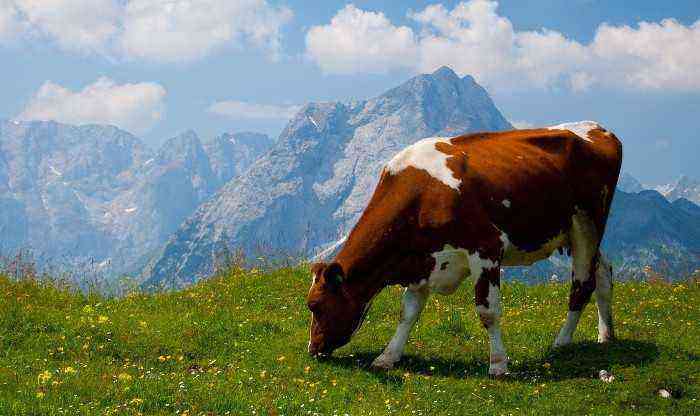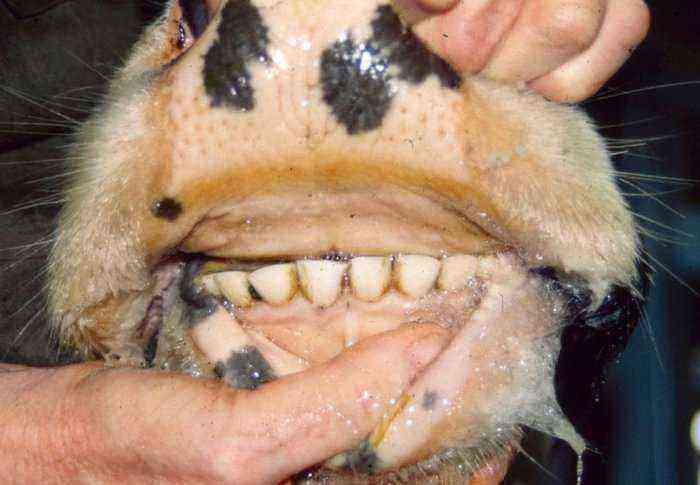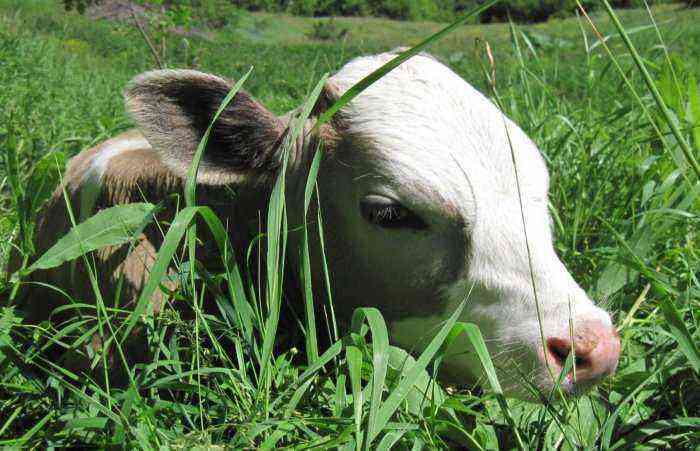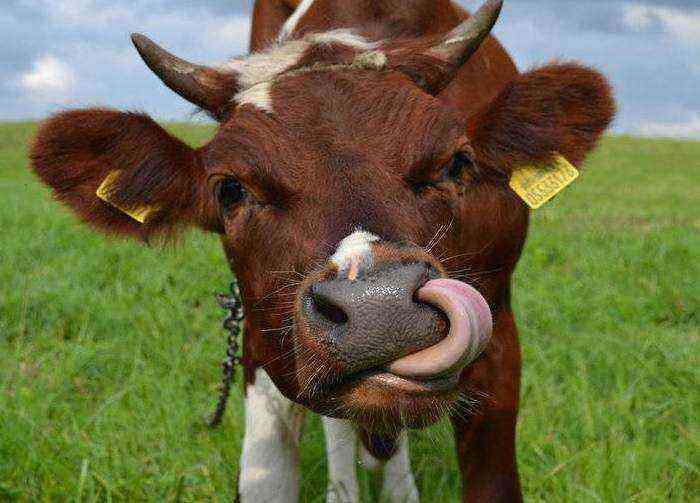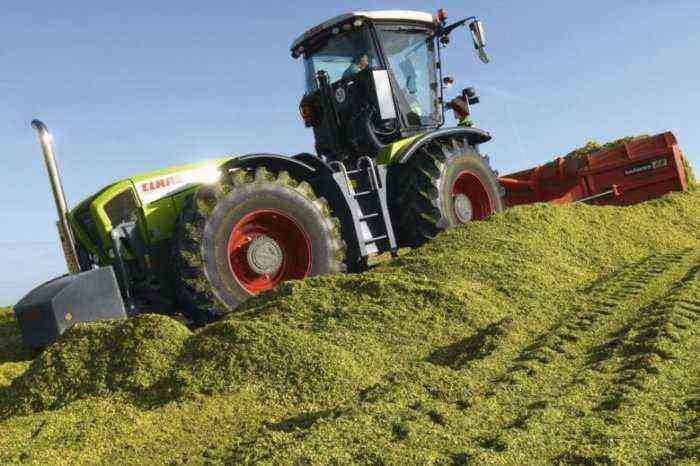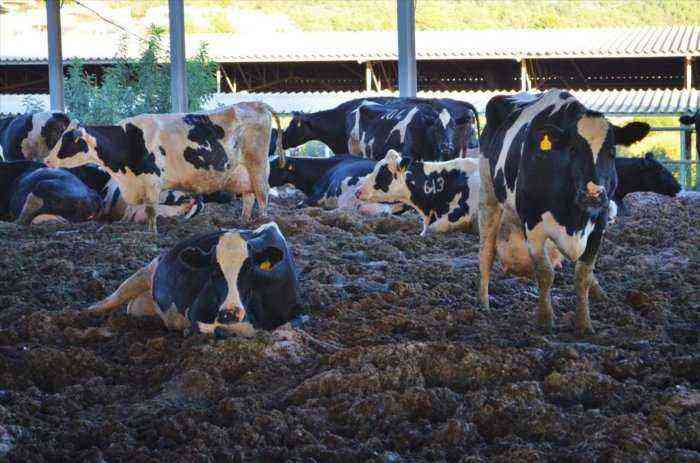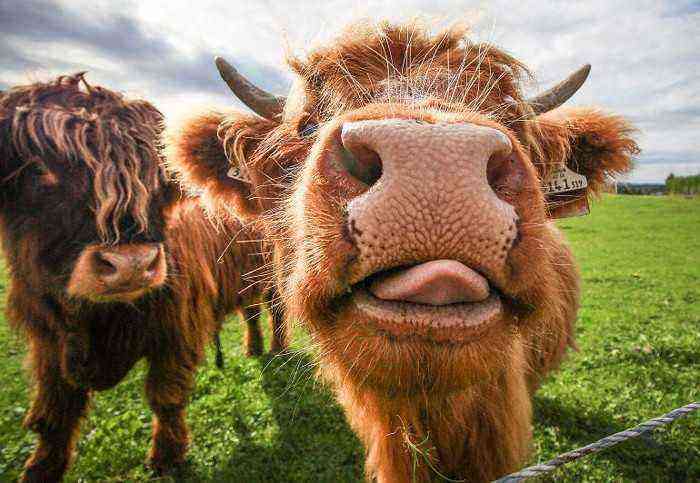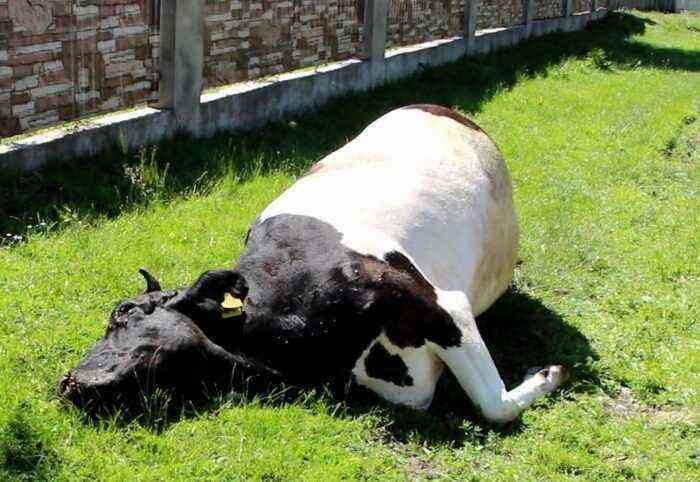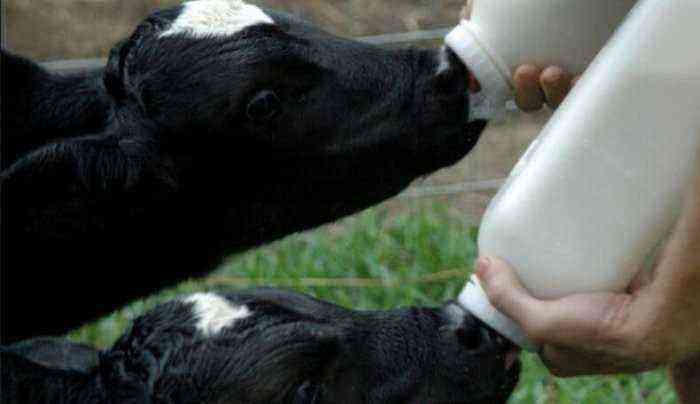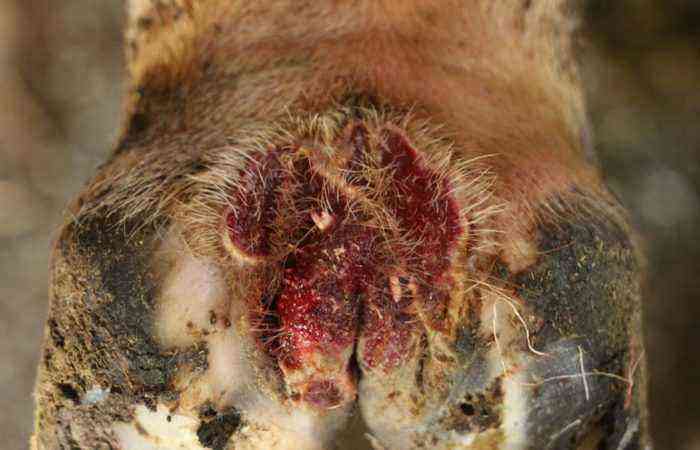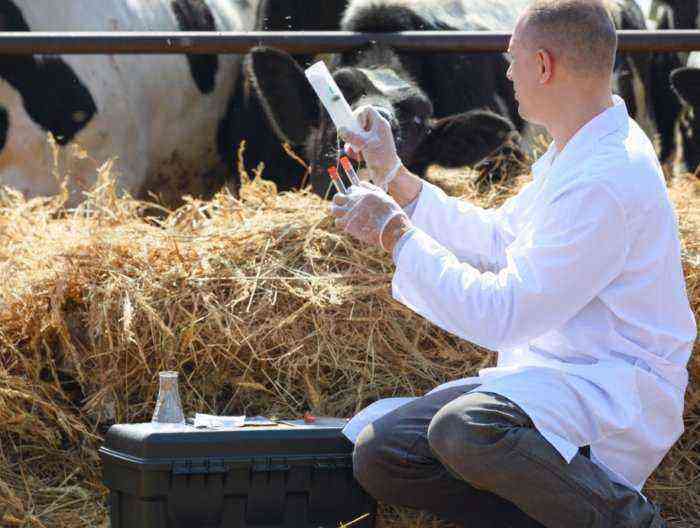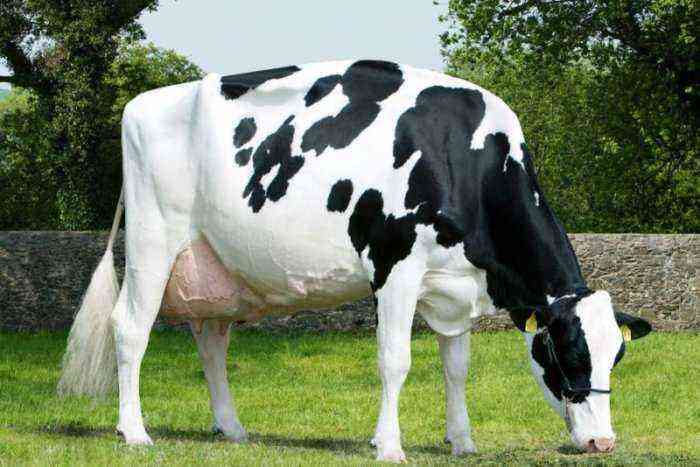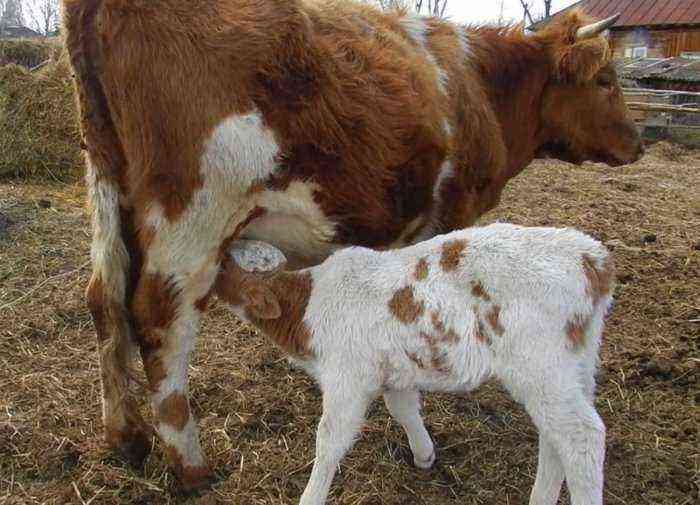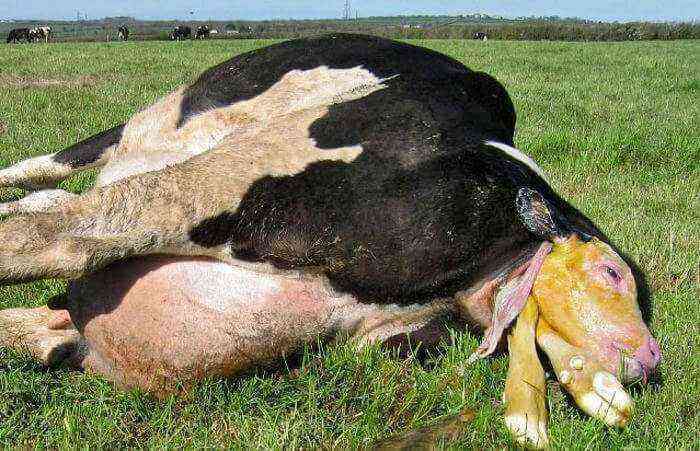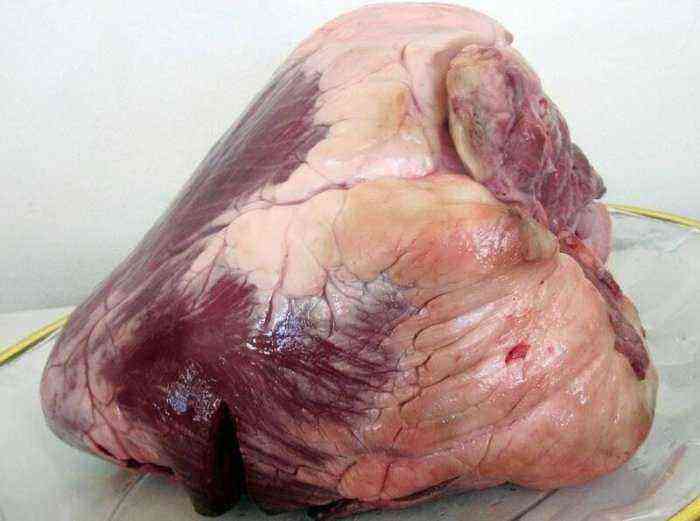The absence of chewing gum in a cow is a dangerous symptom, it indicates a violation of the stomach in an animal. Noticing that the calf has lost its chewing gum, the farmer must figure out what happened and try to help him. Causes of lack of ruminant in cows and treatments will be discussed in this article.
No chewing gum in a cow
The structure of the stomach and the mechanism of chewing gum
The stomach of ruminants has an unusual structure. It consists of four departments:
- Scar.
- Grids.
- Books.
- To the rat.
The food that cows eat passes through the esophagus into the rumen. After some time (half an hour or an hour after eating), due to the reflex contraction of the proventriculus, which is controlled by the vagus nerve, the cow regurgitates a portion of the feed from the rumen back into the oral cavity. The cow carefully processes food and moistens it with saliva, and after about a minute swallows it again. After a few seconds, the animal regurgitates a new lump and processes it again. This mechanism is called chewing gum. The average duration of this process is about 50 minutes.
When the chewing gum stops, there is a short period of rest, after which everything repeats. During the day, the cow is able to process up to 60 kilograms of feed contained in the rumen. The food chewed and moistened with saliva, getting back into the stomach, mixes with the rest of the contents of the scar and gradually moves towards the abomasum through the mesh and the book, thanks to regular contractions of the muscles of the proventriculus. If the cow does not have chewing gum, this indicates a violation of the digestive system.. There are several reasons why this might happen.
Reference. Foods that are easily digested stay in the rumen for no more than 2 hours, while coarse foods can stay there for several days. The cow gradually processes them, thanks to the cud mechanism.
The calf’s stomach is arranged according to the same principle – it has 4 chambers, but while the baby is feeding on mother’s milk, only one of them is involved – the abomasum. Milk gets there straight from the esophagus and is absorbed in full. This is why calves don’t chew gum. All parts of the stomach begin to work in them a few weeks after birth, when the calves are fed with hay.
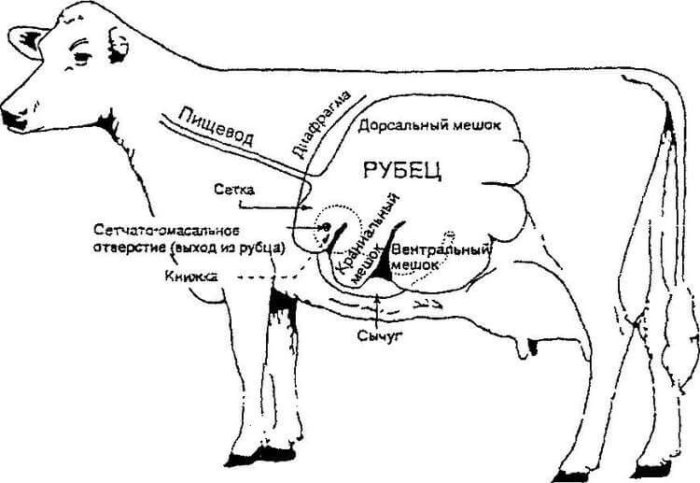
Arrangement of the digestive system of cattle
Reasons for chewing gum
So, the lack of chewing gum is a symptom that cannot be ignored, it indicates a violation of the digestive system in a cow. Consider the main reasons for the loss of chewing gum in calves:
- Atony.
- Timpania.
- Traumatic reticulitis.
Each of these states is dangerous for a cow. In the process of getting to know these diseases, it will become clear why.
Atony
A decrease in the contractility of the stomach or its complete absence is called atony. If the muscles of the proventriculus cease to contract, food stagnates in the rumen, and the process of digestion stops. This condition poses a threat to the cow – intestinal obstruction and tympania, that is, bloating, may develop. Reasons for stopping the motor activity of the stomach:
- Sudden change in diet in calves.
- Poor quality feed, such as hay or grain affected by mold fungi.
- Eating large amounts of succulent food or concentrates.
- Drinking poor quality water.
- Lack of exercise.
Attention! Atony can be secondary, that is, develop against the background of other diseases – traumatic reticulitis, mastitis, peritonitis, various infections.
Treatment of atony is aimed at resuming the motor activity of the stomach and preventing gas formation. On the first day, the calf should be kept on a starvation diet, while drinking is not limited. Massage helps to increase the tone of the muscles of the proventriculus. It is performed with a fist on the outer part of the peritoneum in the region of the hungry fossa. The active behavior of the cow also contributes to the resumption of the digestive process. When the scar stops, it is useful to give the cow 2-3 liters of fresh milk to drink.
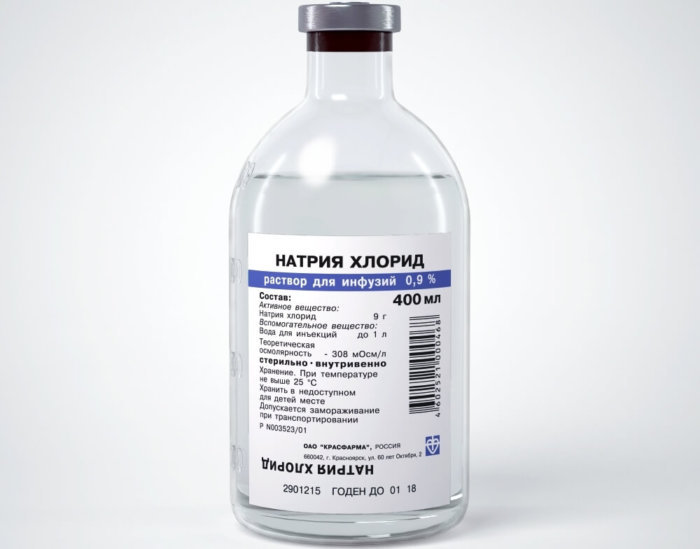
Sodium chloride
Sodium chloride is administered intravenously. Already after a single injection, the contractility of the proventriculus is noticeably increased.
Attention! If atony has developed against the background of another disease, treatment includes the fight against the underlying ailment.
Tympany
The swelling of the scar is called tympania. Increased gas formation can occur as a result of blockage of the esophagus, atony of the stomach, and the predisposing factors are:
- Eating easily fermenting food.
- Overfeeding concentrates.
- Eating poisonous plants by cows.
Tympania is dangerous to the life of a calf. The gases accumulating in the rumen increase the volume of the stomach, as a result, pressure is created on the diaphragm. The cow suffers from a lack of oxygen. If you do not help her in time, death from asphyxia will occur.
Tympania is treated urgently if there are signs of oxygen starvation – blue mucous membranes, shallow breathing. In this case, the scar is punctured with a trocar. In other cases, massage of the hungry fossa is used, dousing this area with cold water.
Attention! If the cow lost her gum and developed tympania, you need to check if there is a blockage in the esophagus. If there is a foreign body in it, it must be removed.
To stimulate the passage of gases, the cow is placed so that the front of the body is higher than the back. If necessary, use a probe. With it, it is easier to remove gases from the rumen. Means to reduce the concentration of gases in the rumen:
- Ichthyol solution.
- Burnt magnesium.
- Ammonia solution.
- New milk.
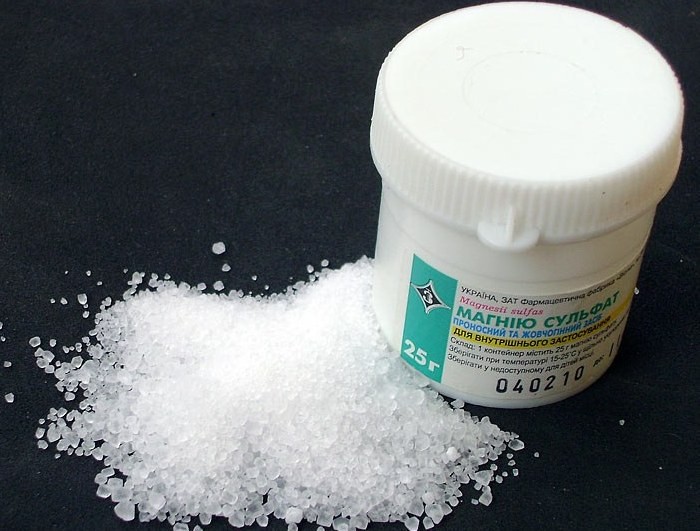
Magnesia
The cow is kept on a starvation diet for a day, after which the usual feed is gradually introduced into the diet.
Traumatic reticulitis
If the cow does not chew the cud, it is possible that she has traumatic reticulitis. This disease occurs when the animal swallows sharp objects, and they injure, and sometimes perforate the wall of the scar. In this case, the stomach also stops working, and then tympania occurs. The foreign body that caused the loss of chewing gum must be removed. Loose pieces of wire, nails and other metal objects can be reached with a magnetic probe. If this fails, sometimes they resort to surgical intervention.
Treatment with folk remedies
If the chewing gum of a cow is gone, you can try to cure it with folk remedies. Hellebore tincture helps to start the stomach if it stops. Calves are given to drink 10 ml of the product, having previously dissolved it in half a liter of water. Adults are given 15 ml of hellebore tincture.
No less effective will be such folk remedies for starting the stomach:
- Cucumber pickle.
- Mineral water.
- Lactic acid.
- A decoction of chamomile or St. John’s wort.
Attention! If none of the above helped restore gum, perhaps the problem can only be solved by surgery.
If you discover that the calf has lost its gum, call the veterinarian to find out the reason. It is necessary to help the animal as soon as possible, especially if there are signs of oxygen deficiency, which develops with tympania. Delay can result in the loss of the animal.
